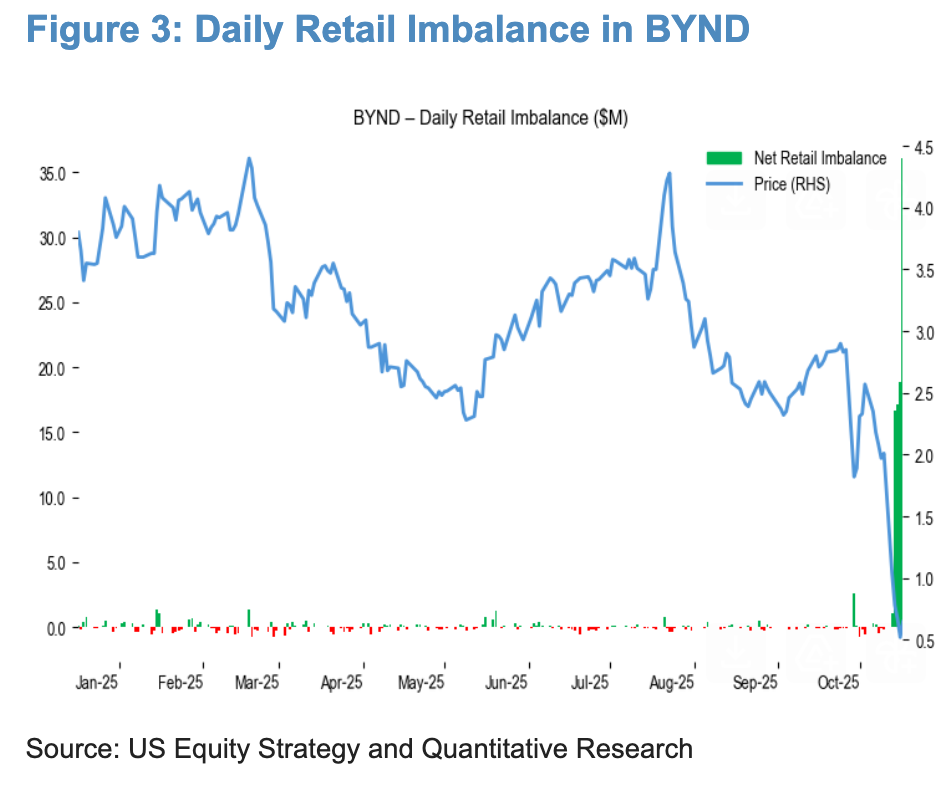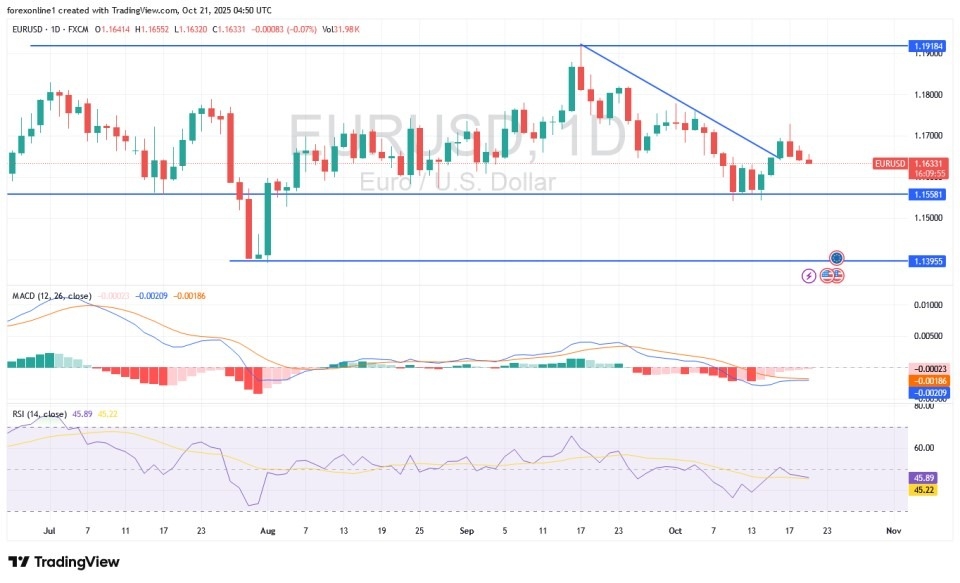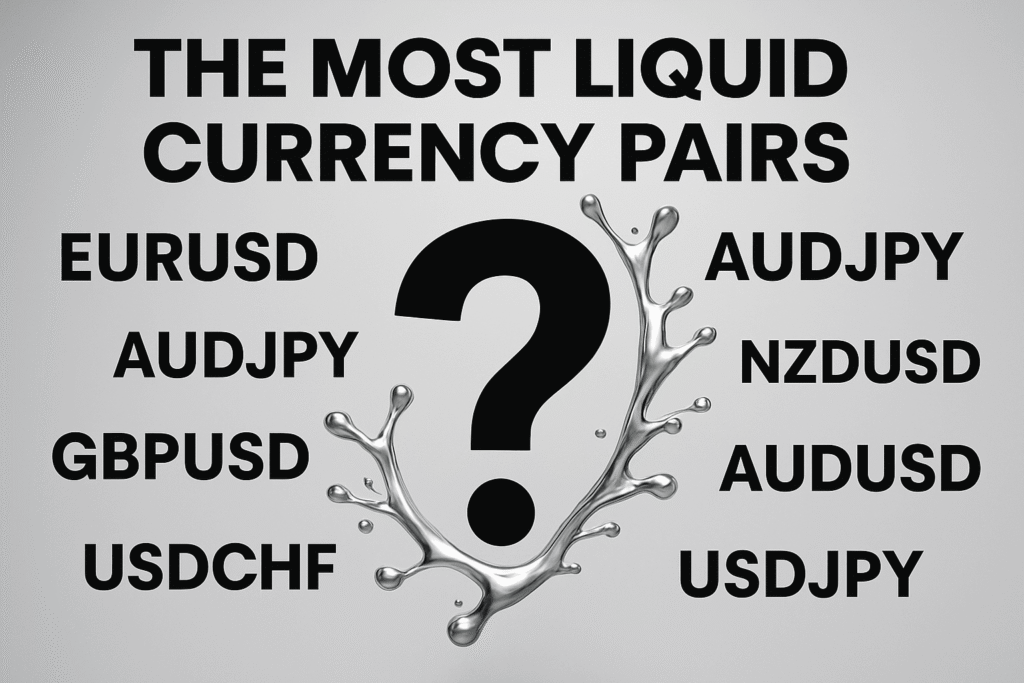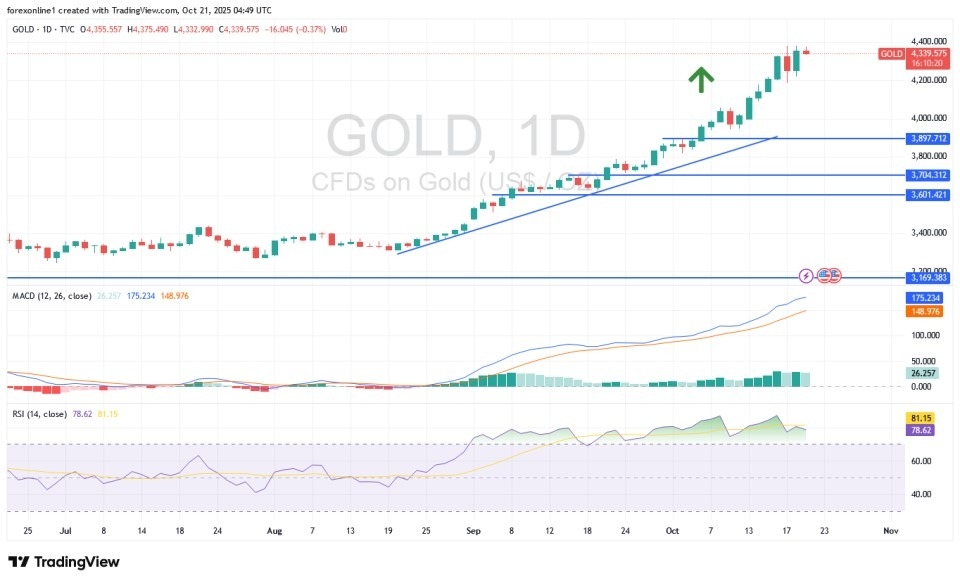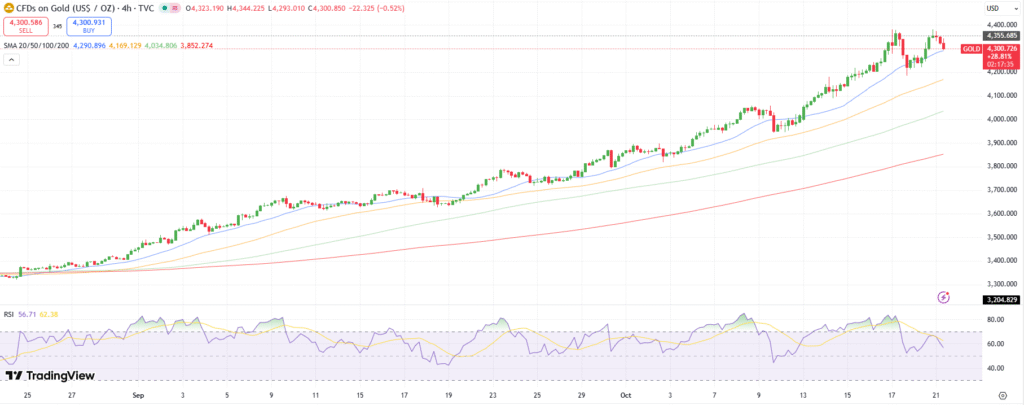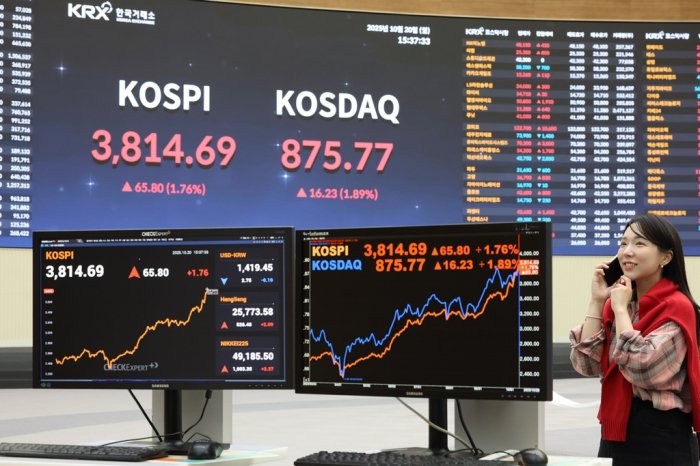Toronto, Canada – October 21, 2025 – After a dazzling ascent that saw gold prices reach unprecedented highs throughout 2025, the precious metal experienced a notable pullback today, sending ripples of concern through global financial markets, particularly in resource-heavy economies like Canada. The S&P/TSX Composite Index (TSX: ^OSPTX), a benchmark heavily weighted by mining and materials companies, bore the brunt of this correction, highlighting the inherent volatility and interconnectedness of commodity markets. This sudden shift from a bullish rally to a sharp decline has prompted investors and companies alike to reassess their strategies in an unpredictable economic landscape.
The immediate implications for the Canadian market were pronounced. With gold spot prices reportedly falling by over 3.5% from their recent peak of around $4,381.50 per ounce, the S&P/TSX Composite Index saw a significant downturn, dropping sharply by approximately 1.6% by midday. The Materials Capped Index, a key component of the TSX, suffered an even steeper decline, falling as much as 7.7%. This downturn was primarily fueled by profit-taking after gold’s extraordinary rally, a strengthening U.S. dollar, and signs of easing U.S.-China trade tensions, which diminished safe-haven demand. Adding to the domestic pressure, higher-than-expected Canadian consumer price inflation data tempered expectations for an interest rate cut by the Bank of Canada, further dampening overall market sentiment.
A Day of Correction: Unpacking Gold’s October 21st Plunge
The gold market had been on an extraordinary bull run throughout 2025, with prices surging over 60% year-to-date, driven by persistent inflation concerns, anticipation of U.S. interest rate cuts, ongoing geopolitical tensions, and robust central bank buying. Just yesterday, October 20, 2025, gold hit an all-time high of $4,381.21 per ounce. However, the momentum shifted dramatically today, October 21, 2025. Spot gold prices retreated by over 3.5%, with some reports indicating a fall of as much as 6.3% from its peak, settling around $4,082.03 per ounce. U.S. gold futures also saw a significant drop of 5.4%.
This sharp correction was largely a result of profit-taking by investors capitalizing on gold’s historic gains. The strengthening U.S. dollar made gold, priced in USD, more expensive for international buyers, reducing demand. Furthermore, any perceived de-escalation in global geopolitical tensions, such as reports of easing U.S.-China trade frictions, typically reduces the appeal of safe-haven assets like gold. Key players involved in this market movement included large institutional investors engaging in profit-taking, speculative traders reacting to technical indicators signaling overbought conditions, and central banks whose ongoing purchasing strategies provide underlying support but could not prevent a short-term correction. The initial market reaction was a swift and broad sell-off in gold and gold-related equities, particularly impacting the heavily exposed Canadian market.
Mining Giants Face Headwinds as Gold Retreats
The impact of lower gold prices on public companies, particularly the numerous gold mining firms listed on the Toronto Stock Exchange (TSX), was immediate and substantial. Mining equities often amplify movements in gold prices, meaning a 10% drop in gold can translate to a 15-20% decline in mining stock values. Today’s correction saw significant plunges across the sector.
Major gold producers experienced sharp declines: Kinross Gold Corporation (TSX: K) shares slid 11%, Alamos Gold Inc. (TSX: AGI) retreated 10%, Agnico Eagle Mines Limited (TSX: AEM) was off 8.7%, Barrick Gold Corporation (TSX: ABX) dropped 8.6%, and Newmont Corporation (TSX: NGT) declined 9.1%. Even companies with relatively low All-in Sustaining Costs (AISC) like Agnico Eagle (US$1,235/ounce) felt the squeeze on their considerable margins. Higher-cost producers like IAMGOLD (TSX: IMG), which saw its AISC rise significantly in Q1 2025, would be particularly vulnerable to such price pullbacks, impacting their profitability and potentially leading to operational reviews. Newer entrants or those with significant recent investments, such as K92 Mining (TSX: KNT), which recently poured first gold from an expansion, might see the expected profitability of their projects tempered, despite very low AISC.
In contrast, gold streaming and royalty companies, like Franco-Nevada Corporation (TSX: FNV) and Wheaton Precious Metals Corp. (TSX: WPM), demonstrated comparatively more resilience, with Franco-Nevada down 5.1%. Their business model, which involves providing upfront financing to miners in exchange for future production at a fixed, discounted price, insulates them from direct mining costs and operational risks, leading to lower volatility. For all mining companies, a sustained period of lower gold prices would necessitate aggressive cost-cutting, deferral of non-essential capital expenditures, reduced exploration budgets, and a focus on high-grade ore to maintain profitability. This environment could also spur increased merger and acquisition activity, as stronger, well-capitalized players seek to acquire distressed assets.
Broader Implications for Resource-Heavy Economies
The gold price pullback on October 21, 2025, carries significant wider implications for resource-heavy economies like Canada. As the world’s fourth-largest gold producer, Canada’s economy is intimately tied to the performance of its mining sector. In 2023, the broader mining sector contributed an estimated $117 billion to Canada’s GDP, with gold production alone valued at over $10 billion, supporting hundreds of thousands of jobs and substantial export revenues. A sustained decline in gold prices would directly impact Canada’s GDP and export earnings, reducing the overall value of its mineral production.
Beyond direct economic output, ripple effects would cascade through various sectors. Reduced profitability in the mining industry could lead to lower investment in exploration and development, potentially resulting in job losses in mining-dependent communities and related industries such as equipment manufacturing and engineering services. The Canadian dollar (CAD) could also face downward pressure, as gold, typically priced in USD, becomes less valuable in foreign currency terms. Government revenues from corporate taxes on mining companies would decrease, potentially limiting public spending. This event underscores a broader trend of commodity price volatility that has characterized global markets for decades, with historical precedents in the 1970s stagflation era and the 2008 financial crisis demonstrating gold’s role as both a safe-haven and a speculative asset. Regulatory bodies and policymakers in Canada would likely face pressure to consider monetary and fiscal responses, potentially including targeted support for the mining sector or initiatives to further economic diversification to build resilience against future commodity shocks.
Navigating the Future: What Comes Next for Gold and the TSX
In the short term, the gold market is likely to experience continued volatility and potentially further correction as it seeks new support levels. Investors will closely watch upcoming inflation data and Federal Reserve monetary policy decisions, as expectations for interest rate cuts generally support gold by reducing the opportunity cost of holding the non-yielding asset. A strengthening U.S. dollar, however, could continue to exert downward pressure. For the S&P/TSX Composite, its heavy weighting in materials means it will remain highly sensitive to these gold price fluctuations, with further declines in gold likely to weigh on the index.
Looking long-term, despite the recent dip, the overall outlook for gold remains predominantly bullish. Persistent central bank purchases, lingering global inflation concerns, ongoing geopolitical risks, and expectations of further Fed easing are expected to provide structural support for gold prices. Some analysts project gold could reach $5,000 per ounce by 2026, and potentially even higher by 2030, driven by these fundamental factors and de-dollarization trends. For mining companies, strategic pivots will be crucial: a relentless focus on cost management and operational efficiency through technological adoption, diversification into different geographic areas or complementary resources, and adherence to sustainable mining practices. Investors, in turn, should adopt a disciplined approach, considering market dips as potential “buy the dip” opportunities, maintaining a long-term perspective, and ensuring portfolio diversification across various asset classes, with a strategic allocation to gold and quality mining stocks. Emerging markets will continue to play a significant role, both as sources of demand and supply, though they present unique challenges in terms of political and regulatory stability.
A Resilient Market in Flux: Key Takeaways and Investor Watchpoints
The gold price pullback on October 21, 2025, serves as a potent reminder of the inherent volatility in commodity markets and its profound impact on resource-heavy economies like Canada. While the immediate reaction was a sharp sell-off in gold and related equities, particularly on the S&P/TSX Composite, the event should be viewed within the context of a broader, long-term bullish trend for gold driven by fundamental economic and geopolitical factors.
Key takeaways include the amplified sensitivity of Canadian mining stocks to gold price movements, the strategic importance for mining companies to prioritize efficiency and cost control, and the ongoing need for economic diversification in resource-dependent nations. Moving forward, the market will likely consolidate, with gold prices potentially finding new support levels before resuming a gradual ascent. Investors should assess this period of volatility as an opportunity for strategic entry or rebalancing, rather than a cause for panic. Watch for further macroeconomic data, particularly U.S. inflation figures and Federal Reserve commentary on interest rates, as these will be critical determinants of gold’s short-term trajectory. Additionally, monitor geopolitical developments and central bank gold purchasing trends, which will continue to underpin gold’s long-term appeal. The lasting impact of this event will likely be a renewed focus on resilience and strategic adaptation across the financial and mining sectors.
This content is intended for informational purposes only and is not financial advice

